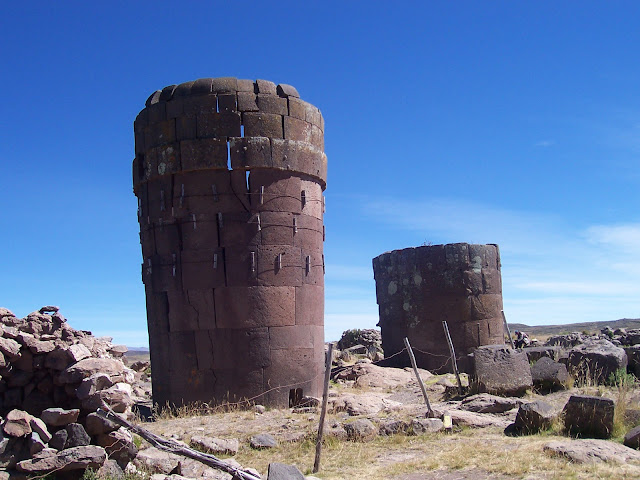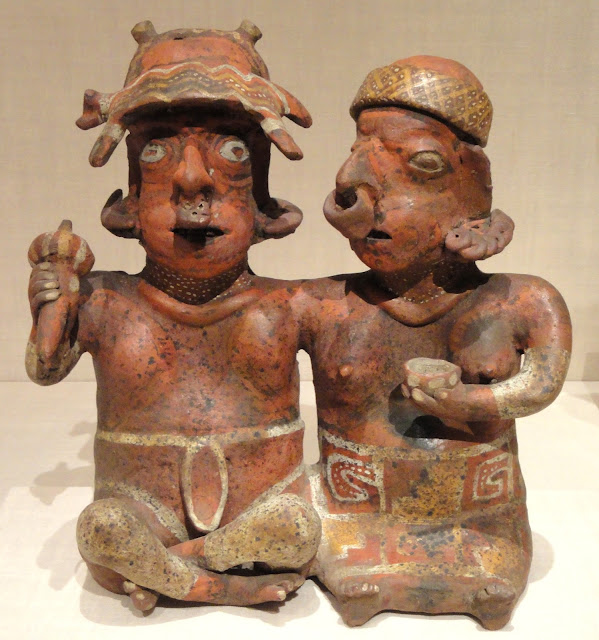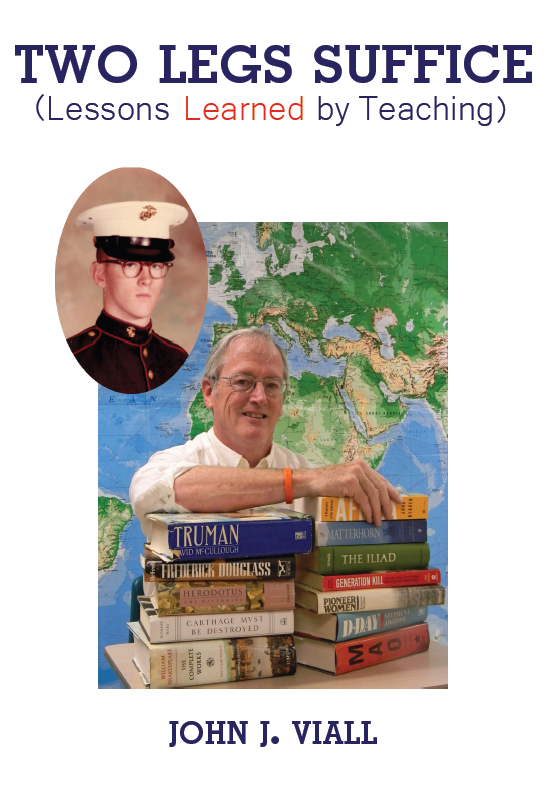I happened across a travel story about the Chachapoyan people recently. They lived and thrived in the mountains of Peru, c. A.D. 600
to 1470, and controlled a region the size of Massachusetts. They had no system of writing; but we do know they terraced their lands to create room for farming. Potatoes were a dietary staple.
The ruins of Kuelap.
My students always found it interesting to learn that the the Incas, the more
powerful neighbors of the Chachapoyas, and the Aztecs, far to the north, were expanding their empires at the same time France and England were finally pounding each other in
the Hundred Years’ War. France and England both survived.
The Chachapoya did not.
 |
| English longbows at the Battle of Crecy, 1346. |
According to archaeologists, they were conquered
by the Incas and their culture subsumed. Some of the ruins they left
behind, however, are as striking as anything a tourist might see at Machu Picchu.
Most impressive are the ruins of Kuelap a
city that sits 9,880 feet above sea level. In all likelihood, a site of religious significance, it could also be easily defended. There
are guard towers in advanced positions on nearby mountains and the main entrance
allows only one person to enter at a time.
Since I retired from teaching in 2008, I have plenty of free time on my hands and I tend to fall down assorted rabbit holes and go looking for stories and pictures that interest me. Here are some of the best pictures I could find, including examples of Chachapoya graves. I also threw in a few pictures from other ancient American civilizations.
Double click on any photo for a larger view.
 |
| Artist rendering of Chachapoya homes. |
 |
| Kuelap ruins. |
 |
Main entry to Kuelap; like other Native Americans, the Chachapoya
never invented a true arch. |
 |
| Aerial view of entry to Kuelap. |
 |
| Massive wall at Kuelap. |
 |
| Keupal sits at almost two miles above sea level. |
 |
| Believed to be a Chachapoya warrior; Inca art. |
 |
| Chachapoya silver cups. |
 |
| Axe head. |
 |
| The Chachapoya domesticated the alpaca. |
 |
The Chachapoya used the llama for its wool, meat and to carry supplies.
They also raised and ate guinea pigs. |
 |
| We believe they worshiped the condor. |
 |
| The pineapple grows in the region. |
 |
| Nearby Gocta Falls, dropping a total of 2,531 feet. |
 |
| The jaguar is native to Peru. |
 |
| The caiman can be found in nearby rivers. |
 |
| The Chachapoya lands were rich in wildlife. |
 |
| Brightly colored parrots supplied feathers for Chachapoya dress. |
 |
| Guard tower on an advanced ridge near Kuelap. |
 |
| Like modern tourists, the Chachapoya probably enjoyed their views. |
 |
| Narrow entry into Kuelap; probably for defensive purposes. |
 |
| Chachapoya symbol, purpose unknown. |
 |
| Chachapoya stone design. |
National Geographic has done several
articles on Chachapoya burial practices and describes
them this way:
The Chachapoya
interred lower-class citizens in common graves with little ceremony. But
occupants of the cliff tombs were carefully wrapped in layers of woolen and
cotton textiles. They were also surrounded by objects associated with daily
life: pottery and weapons. Because the Chachapoya left no written record,
scholars have long treasured their burial objects.
The trouble is,
looters want them too. More often than not, they arrive at burial sites long
before archaeologists do.
The Chachapoya
developed their culture relatively rapidly, building large towns and
fortresses—apparently to protect themselves from each other, since there is
little evidence of rival cultures early on in the region.
Around 1470 the
Inca arrived, and the Chachapoya were overwhelmed. As part of the Inca policy
of subjugation, many residents of Chachapoya settlements were transplanted to
distant areas. Traditional Chachapoya burial rituals, including the building of
tombs, persisted for a time. But because the conquering Inca often preempted
tombs for their own use, many contain not only typical Chachapoya crafts but
Inca artifacts as well.
“It was probably the Inca who gave them the
name Chachapoya, meaning ‘people of the clouds.’”
J. Marla Toyne, an archaeologist with the
University of Central Florida, says Chachapoya dead were buried as
“close to heaven” as possible. Toyne explains how a team she
led examined their burial sites at a cliff site known as La Petaca:
“We identified
at least 120 human-made structures used as burial places, including open
chamber tombs, platforms and, surprisingly, walkways that connected groups of
tombs,” Toyne says. “They likely walked along the rock ledges, cutting stone
out to widen the pathways and to get stone to build. Once completed, they
filled the tombs by [carrying] up bodies of family members … adults and
children were buried together, including both males and females.”
For Toyne, the
practice of scaling the cliffs of La Petaca provided a meaningful connection to
the Chachapoya people she studies. “Nothing can really put you in the position
of what the ancient people were thinking when they decided to risk their lives
to build these structures,” she says. “You can’t get that by looking at a
picture or a map. When you’re up there, you recognize that creating this space
for the dead meant a lot to them.”
Other mummies have been found at Laguna de
los Condores. The region where the Chachapoya lived gets as much as 150 inches
of rain.
So cliffs were good for burial.
 |
| Chachapoya "mummy." |
 |
| High-ranking members of Chachapoya society were buried on the sides of cliffs. |
 |
| The dead were enclosed in clay figures. |
 |
| Looters have broken open many Chachapoya burial sites. |
 |
| A burial site. |
 |
| Burial site. |
 |
| Archaeologists do not know what these symbols mean. The Chachapoya had no written language. |
 |
| Dr. Toyne's team studied Chachapoya burial sites. |
 |
| To get to many burial sites mountain climbing skills were required. |
***
Once I tumble down a rabbit hole, I keep
falling. You can find all kinds of great photos on the internet to use with
your classes. For more on a variety of native American
cultures click on this link.


































































